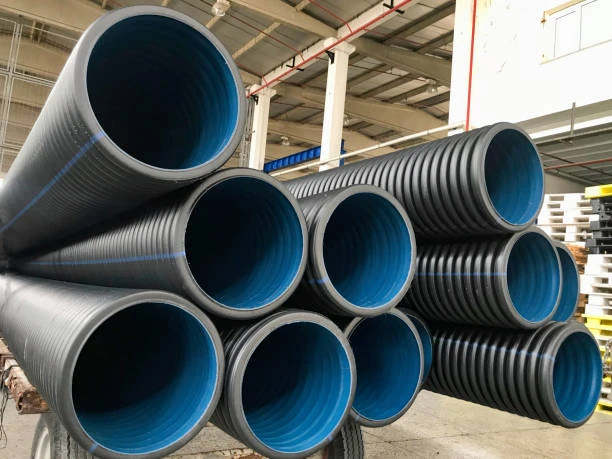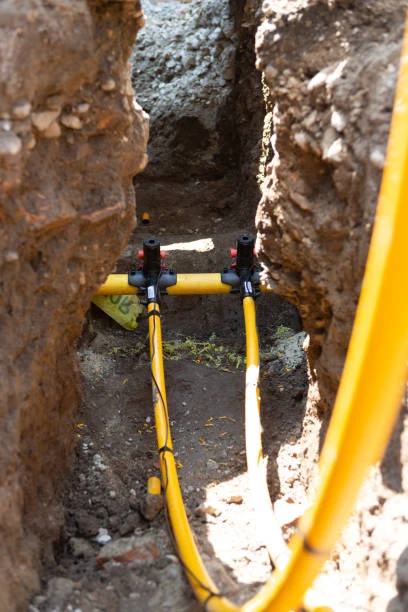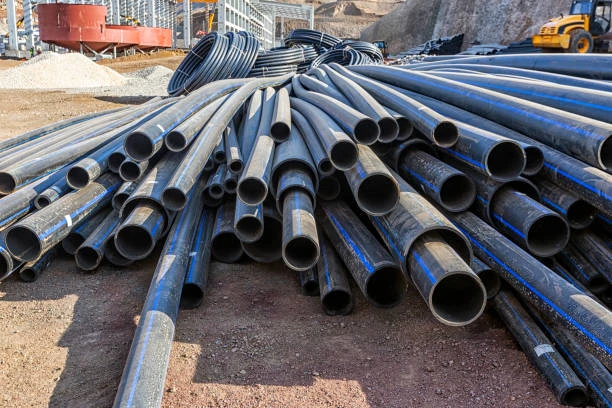High-density polyethylene HDPE pipe have witnessed a remarkable surge in demand in recent years, primarily driven by extensive infrastructure development and technological advancements. As cities grow and industries expand, the need for reliable, efficient, and sustainable piping solutions has never been more critical. This article explores the factors contributing to the rising popularity of HDPE pipe and how advancements in technology are shaping their use across various sectors.

Understanding HDPE Pipe
What Are HDPE Pipe?
HDPE pipe are made from high-density polyethylene, a thermoplastic polymer known for its strength and durability. These pipes are widely used in various applications, including water supply, sewage systems, gas distribution, and industrial processes. Their unique properties make them a preferred choice over traditional materials like PVC and steel.
Key Characteristics of HDPE Pipe
- Durability: HDPE pipes are resistant to corrosion, chemicals, and environmental stress, leading to a long service life.
- Flexibility: Their flexibility allows for easier installation, especially in challenging terrains.
- Lightweight: HDPE pipes are significantly lighter than traditional piping materials, reducing transportation and installation costs.
- Leak-Proof: They can be joined using heat fusion techniques, creating leak-proof connections that minimize water loss.
Factors Driving Demand for HDPE Pipe
1. Infrastructure Development
The global push for infrastructure development has greatly contributed to the increased demand for HDPE pipes. Governments and private sectors are investing heavily in modernizing and expanding infrastructure, particularly in emerging markets. Key areas of focus include:
- Water Supply Systems: As urban populations grow, there is a pressing need for efficient water distribution systems. HDPE pipes are ideal for this purpose due to their durability and resistance to corrosion.
- Sewage and Wastewater Management: The need for effective sewage systems is crucial for public health. HDPE pipes offer reliable solutions for transporting wastewater, ensuring safe and efficient disposal.
- Irrigation Systems: In agricultural regions, HDPE pipes are used for irrigation, providing farmers with efficient water delivery systems that enhance crop yields.
2.Technological Advancements
Advancements in manufacturing and installation technologies have significantly improved the efficiency and reliability of HDPE pipes. Some notable developments include:
- Fusion Technology: Modern fusion welding techniques allow for seamless connections between HDPE pipes, creating strong, leak-proof joints that enhance system integrity.
- Enhanced Pipe Production: Innovations in extrusion and molding processes have led to the production of HDPE pipes that meet stringent quality standards and performance specifications.
- Smart Monitoring Systems: The integration of technology into piping systems, such as smart sensors, allows for real-time monitoring of pressure, flow, and potential leaks. This helps in proactive maintenance and minimizes downtime.
Advantages of HDPE Pipe
The growing preference for HDPE pipes can be attributed to their numerous advantages over traditional piping materials:
1. Cost-Effectiveness
While the initial cost of HDPE pipes may be higher than some alternatives, their long lifespan and reduced maintenance needs often lead to lower overall costs. The lightweight nature of HDPE also translates to savings in transportation and installation.
2. Environmental Benefits
HDPE pipes are environmentally friendly due to their recyclability. They can be manufacture using recycled materials and, at the end of their life cycle, can be recycled again, contributing to a circular economy. Additionally, their durability reduces the need for frequent replacements, further minimizing waste.
3. Resistance to Corrosion and Chemicals
Unlike traditional materials that may degrade over time, HDPE pipes resist corrosion and chemical reactions, making them suitable for various applications, including those involving aggressive fluids.
4. Adaptability to Various Applications
HDPE pipes are versatile and can be use in a wide range of applications, from residential plumbing to large-scale industrial processes. Their adaptability makes them a go-to solution for engineers and contractors.
The Future of HDPE Pipe
As the demand for HDPE pipes continues to rise, several trends are likely to shape their future:
1. Increased Use in Urban Development
As cities grow and urbanization accelerates, the demand for efficient water management systems will rise. HDPE pipes are expecte to play a significant role in new urban infrastructure projects, particularly in developing regions.
2. Innovations in Manufacturing Processes
Continued advancements in manufacturing technologies will enhance the efficiency and quality of HDPE pipe production. Automation and smart technologies will streamline operations, leading to increased output and reduced costs.
3. Greater Focus on Sustainability
Sustainability will remain a critical focus in the construction and plumbing industries. As environmental regulations become stricter, the demand for eco-friendly materials like HDPE will likely increase, promoting its use in various applications.
4. Expansion into New Markets
The global market for HDPE pipes is expecte to expand, particularly in regions experiencing rapid industrialization. Emerging economies in Asia, Africa, and Latin America are likely to drive growth, as infrastructure needs continue to evolve.
Challenges Facing HDPE Pipe
Despite their advantages, HDPE pipes also face challenges that could impact their adoption:
1. Competition from Alternative Materials
While HDPE pipes have numerous benefits, competition from other materials, such as PVC and fiberglass, remains strong. Price fluctuations and material availability can influence material selection.
2. Installation Knowledge Gaps
Proper installation is crucial for the performance of HDPE pipes. A lack of skilled labor familiar with fusion welding and other installation techniques can hinder the adoption of HDPE in some regions.
3. Regulatory Hurdles
Regulatory requirements for construction materials can vary by region. Navigating these regulations can pose challenges for manufacturers and contractors looking to use HDPE pipes in their projects.
Conclusion
The surging demand for HDPE pipes is a testament to their advantages in infrastructure development and the impact of technological advancements. As the need for efficient, reliable, and sustainable piping solutions grows, HDPE pipes will play an increasingly critical role across various sectors. With ongoing innovations and a strong focus on sustainability, the future of HDPE pipes looks promising, paving the way for enhanced infrastructure and improved quality of life.
FAQs
- What are HDPE pipes used for? HDPE pipes are use for a variety of applications, including water supply, sewage systems, gas distribution, and industrial processes.
- What advantages do HDPE pipes have over traditional materials? HDPE pipes are more durable, lightweight, flexible, and resistant to corrosion and chemicals compared to traditional materials like PVC and steel.
- How are HDPE pipes installed? HDPE pipes are typically installe using fusion welding techniques, which create strong, leak-proof joints.
- Are HDPE pipes environmentally friendly? Yes, HDPE pipes are recyclable and produced from recycled materials, contributing to sustainable practices in construction and plumbing.
- What challenges do HDPE pipes face in the market? Challenges include competition from alternative materials, knowledge gaps in proper installation techniques, and regulatory hurdles in different regions.


















